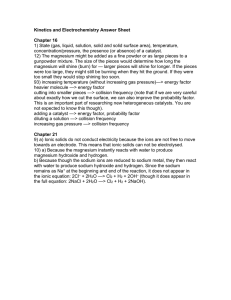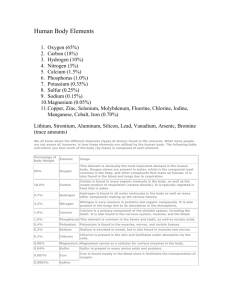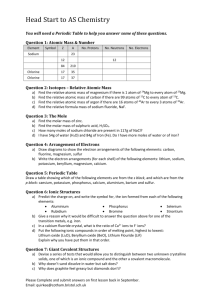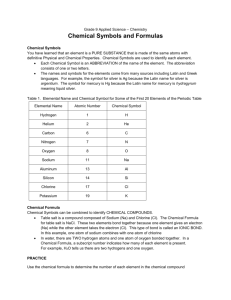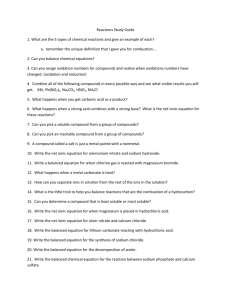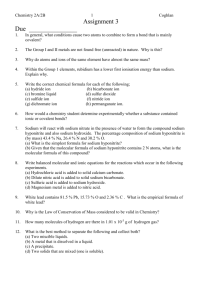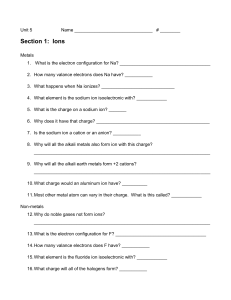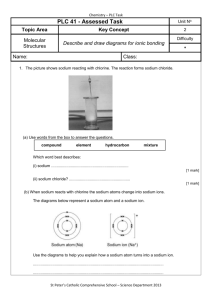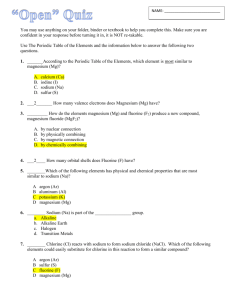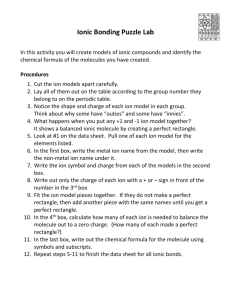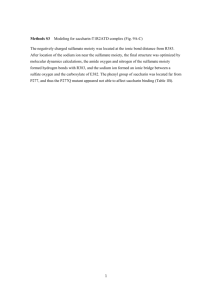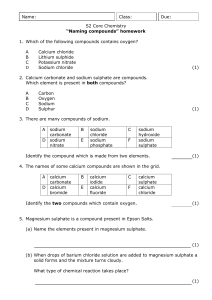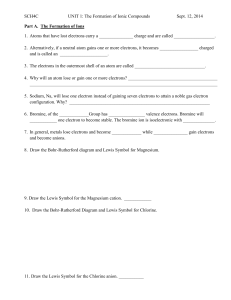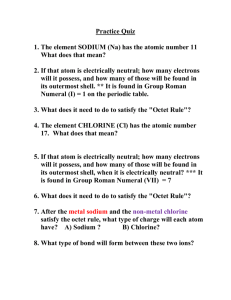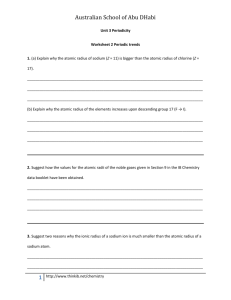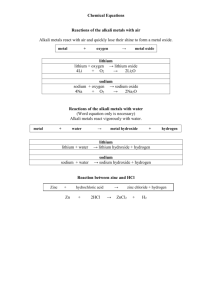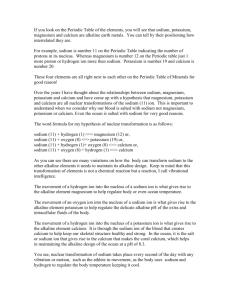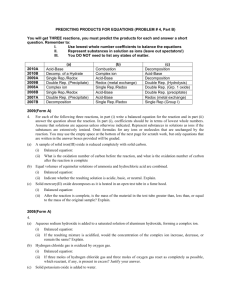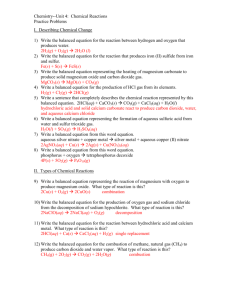National 5 Whole Course Revision Questions
advertisement
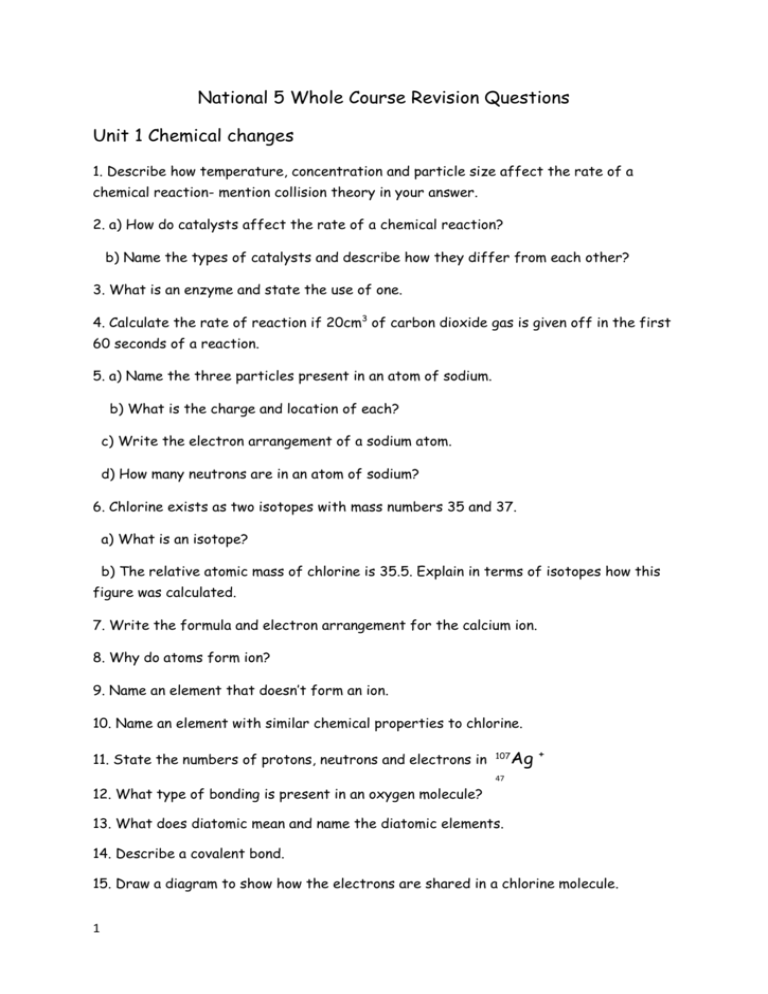
National 5 Whole Course Revision Questions Unit 1 Chemical changes 1. Describe how temperature, concentration and particle size affect the rate of a chemical reaction- mention collision theory in your answer. 2. a) How do catalysts affect the rate of a chemical reaction? b) Name the types of catalysts and describe how they differ from each other? 3. What is an enzyme and state the use of one. 4. Calculate the rate of reaction if 20cm3 of carbon dioxide gas is given off in the first 60 seconds of a reaction. 5. a) Name the three particles present in an atom of sodium. b) What is the charge and location of each? c) Write the electron arrangement of a sodium atom. d) How many neutrons are in an atom of sodium? 6. Chlorine exists as two isotopes with mass numbers 35 and 37. a) What is an isotope? b) The relative atomic mass of chlorine is 35.5. Explain in terms of isotopes how this figure was calculated. 7. Write the formula and electron arrangement for the calcium ion. 8. Why do atoms form ion? 9. Name an element that doesn’t form an ion. 10. Name an element with similar chemical properties to chlorine. 11. State the numbers of protons, neutrons and electrons in Ag + 107 47 12. What type of bonding is present in an oxygen molecule? 13. What does diatomic mean and name the diatomic elements. 14. Describe a covalent bond. 15. Draw a diagram to show how the electrons are shared in a chlorine molecule. 1 16. What is the shape of a nitrogen hydride molecule? 17. Describe an ionic bond. 18. What happens to the ionic lattice when sodium chloride is dissolved in water? 19. Why do ionic compounds have high melting points? 20. Give an example of a covalent molecular and a covalent network substance. 21. What is the formula of the following: Sulfur dioxide calcium carbonate nickel (II) phosphate 22. Calculate the Gram Formula Mass for the compounds above. 23. How many moles are present in 25g of calcium carbonate? 24. Calculate the concentration of sodium hydroxide solution if 80g are dissolved in 500 cm3 water. 25. Write a balanced formula equation for the reaction of lithium and water. 26. What is the pH range for alkaline solutions? 27. Which ion is present in all acids? 28. Write a balanced formula equation for the reaction of sodium hydroxide with sulphuric acid. 29. Rewrite this as an ionic equation. 30. Write this reaction omitting spectator ions. 31. What is the gas produced when calcium carbonate reacts with hydrochloric acid? 32. Estimate the pH of a solution of a) nitrogen oxide b) lithium oxide 33. What is the concentration of hydrochloric acid if 50cm3 is neutralised by 25cm3 of 2 moll-1 calcium hydroxide? Unit 2 Nature’s Chemistry 1. Name the alkane with four carbon atoms and write its molecular formula. 2. What is the general formula for the alkenes? 3. Name and draw the structure of the first member of the cycloalkanes. 4. What is a homologous series? 2 5. Which of the 3 families above are saturated? 6. How would you show whether the hydrocarbon C6H12 is an alkene or cycloalkane? 7. Draw the full structural formula for the product in the reaction of propene with bromine. 8. What name is given to this type of reaction? 9. Draw the full structural formula for a) 2-methylbutane b) 3,4-dimethylpent-1-ene. 10. Draw an isomer of both. 11. Name the functional group present in all alkanols. 12. Draw the structure of propan-2-ol. 13. Draw and name an alkanoic acid with 5 carbon atoms. 14. Name the ester produced when methanoic acid reacts with ethanol. 15. Name the type of reaction in which esters are formed. 16. Describe a use of a) alkanol b) alkanoic acid c) ester 17. Name the compounds which reacted to form propyl butanoate. 18. What is a combustion reaction? 19. Write a balanced formula equation for the combustion of ethanol. 20. What mass of water is produced by the combustion of 20g hydrogen gas? 21. What is the name given to a chemical reaction in which heat is absorbed? 22. Calculate the enthalpy change when 200cm3 of water is heated by 60C. Unit 3 Chemistry and Society 1. What type of bonding is present in metals? 2. Describe how this allows metals to conduct electricity. 3. Write balanced formulae equations for the following reactions a) sodium and water b) magnesium and hydrochloric acid c) copper and oxygen 4. Put these metals in order of reactivity starting with the least reactive. Sodium 3 Mercury Nickel Gold Aluminium Magnesium 5. In an electrochemical cell containing nickel and magnesium, what is the direction of electron flow? 6. How will the voltage change if nickel is replaced by copper metal? 7. What name is given to the reaction of magnesium with copper (II) sulphate solution? 8. Write a balanced formula equation for the reaction. 9. Write ion electron equations for the oxidation and reduction reactions. 10. Name a rechargeable battery. 11. Describe a hydrogen fuel cell. 12. Name a metal which is extracted from its ore by a) heat alone b) heat and carbon c) electrolysis 13. What is a synthetic polymer? 14. Name the type of reaction in which poly(ethene) is produced from ethene. 15. Draw and name the polymer produced when propene reacts (show 3 monomer units) 16. What is condensation polymerisation and name an example of this type of polymer. 17. Why do we need synthetic fertilisers? 18. Which 3 elements are provided as nutrients in fertilisers? 19. How can you test for ammonia gas? 20. What name is given to the industrial manufacture of ammonia? 21. Name the catalyst used in the process and write a balanced formula equation for the reaction. 22. How is nitric acid manufactured? 23. Calculate the %nitrogen present in ammonium nitrate. 24. Name the 3 types of radiation and describe how they are different to each other. 25. The mass of a radioisotope falls from 6.4g to 0.2g in 3 hours. Calculate the half-life of the radioisotope. 26. Write a nuclear equation for the alpha decay of Radium 226 27. Name a radioisotope used in medicine. 4

